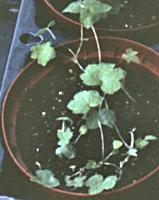
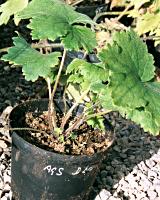
| Return to Asiatic Species List | Return to Species cover page | Return to Home Page |
D. brunonianum is a dwarf delphinium from stony mountain slopes at high altitude in the Himalayan region, including Tibet and the Pamir range. A detailed description is given in the Flora of the Soviet Union. According to this, the bloom is a "loose raceme with 5 - 10 blue or light blue flowers; tepals with slender white hairs on both sides; spur very short, 7-10mm long and 5-6mm wide, conical saccate, obtuse, recurved..... Follicles usually 5, densely pilose." It can be easily distinguished from D. cashmerianum by its reniform and non-flat leaves and by the type of pubescence.
Seed was obtained from the Alpine Garden Society and sown in multi-purpose compost on 17th April 2000. Seedlings developed normally after germination and by late June were ready for pricking out into individual pots. The plants continued to develop by growing a basal rosette of rounded, rather hairy leaves on wiry stalks. None of the plants showed any sign of developing a flower stem.
 |
 |
During autumn, the leaves turned brown and
shrivelled as the plants became dormant. At this stage, grey
mould (botrytis) became a serious problem, infecting
decaying leaf stalks and progressing down into the crown of the
seedlings. Several seedlings were killed and further losses due
to botrytis infection were experienced in the following
year, even of plants in flower. It is obviously important to
avoid over-watering and perhaps to use a more free-draining
compost than the peat-based compost that was used.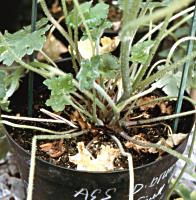
Plants that survived the winter started into growth in spring and developed a flower stem. Secondary growths developed from the base of the stem and produced further flowers when the first had set seed.
The plants approached flowering by the end of June and the difference in bloom architecture from garden delphiniums was soon evident from the replacement of a flower spike by a spreading cluster of buds at the top of stems about 40cm tall. The curiously hooded flowers opened during July.
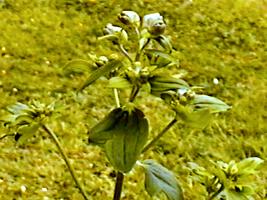 |
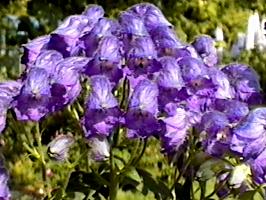 |
At first the flowers remain almost closed and are unattractive to bees. As the flower ages, the sepals spread wider to reveal the eye petals, which were either pale brown or jet black in the plants grown.
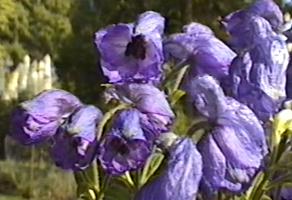 |
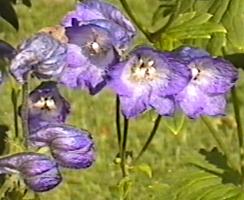 |
| Despite the preference by bees for flowers of D. nutallii or D. burkei, the flowers were pollinated and most florets produced three well-filled seed pods. | 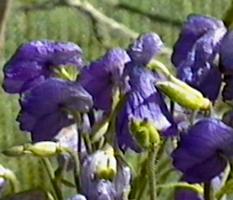 |
| Return to Asiatic Species List | Return to Species cover page | Return to Home Page |